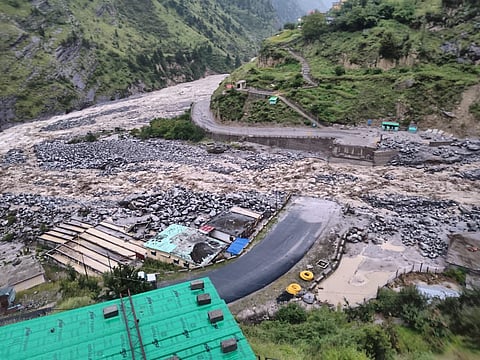

First four months of 2025 Yatra saw 55 days when no pilgrims reached the shrines
Yamunotri and Gangotri hardest hit, with weeks of near-total disruption
Extreme weather, landslides and floods crippled pilgrimage-driven economy
SDC Foundation calls for climate-resilient roads, shelters and monitoring systems
Relief package needed for local businesses, transporters and service providers
The first four months of the 2025 Char Dham Yatra have exposed deep vulnerabilities in Uttarakhand’s pilgrimage economy, with extreme weather and repeated disasters forcing 55 “zero-pilgrim days” between April and August, according to a new analysis by Dehradun-based non-profit Social Development for Communities (SDC) Foundation.
The annual pilgrimage to the four Himalayan shrines, Yamunotri, Gangotri, Kedarnath and Badrinath, began on April 30. But by August 31, the advocacy group found not a single devotee could reach the temples on 55 days, while on 89 other days pilgrim footfall remained under 1,000.
Yamunotri was the most severely affected, registering 23 days with no visitors and 30 days with minimal turnout. Gangotri faced 27 zero-pilgrim days and nine days with fewer than 1,000 devotees. Hemkund Sahib and Badrinath fared better but still recorded three and two days without pilgrims, respectively. The trend of low arrivals was also evident at Hemkund Sahib (29 days), Kedarnath (19 days) and Badrinath (two days).
In a press statement, SDC founder Anoop Nautiyal warned that the disruptions had “broken the backbone” of Uttarakhand’s pilgrimage-driven economy, on which lakhs of local families depend. “The Char Dham Yatra is one of the key economic lifelines of our hill economy,” he said. “The frequency of weather and rain-related disasters this year clearly shows the state needs to shift its focus from record-setting pilgrim numbers to building resilience and sustainability in pilgrimage infrastructure.”
Nautiyal called on the state government to invest in climate-resilient roads, improved drainage systems, real-time weather monitoring, robust communications networks and disaster-safe shelters. He said a comprehensive relief package for small businesses, transporters and service providers was urgently required to prevent bankruptcy and support mental health.
“The long-term priority must be making the Yatra climate and disaster proof, not just a numbers-driven exercise,” Nautiyal added. “Planning for resilience over record-breaking pilgrim numbers is the need of the hour.”
The 2025 Yatra season has already been suspended for five days in early September after fresh landslides, while road access to Yamunotri and Gangotri remains badly damaged. The foundation warned that the coming weeks will test the state’s preparedness and its ability to respond quickly as the pilgrimage season continues.